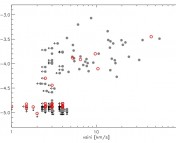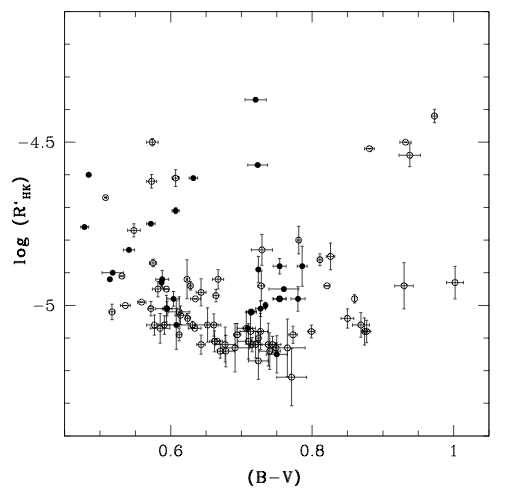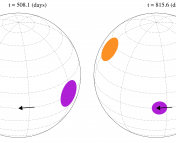The Undergraduate Research series is where we feature the research that you’re doing. If you are an undergraduate that took part in an REU or similar astro research project and would like to share this on Astrobites, please check out our submission page for more details. We would also love to hear about your more general research experience!

Stan DeLaurentiis is a sophomore at Columbia College of Columbia University, pursuing a degree in Astrophysics and Mathematics. Stan is an avid astronomer with a deep love for low-mass stars and stellar formation. Apart from diving into astrophysical data, Stan spends much of his time exploring NYC’s food and music scene.
Low-mass stars are any star less than or about equal to the Sun’s mass (≲1 M☉). In such low-mass stars, chromospheric Hα emission probes the strength of these stars’ underlying magnetic field. Measuring chromospheric Hα emission in low-mass members of open clusters, which have well-known ages, provides us with insight into the evolution of magnetic activity in these stars that are similar to our Sun. Frequently, however, these Hα measurements are made only once, limiting our ability to discern how much inherent variability the Hα line manifests. This in turn impacts our ability to construct robust age-activity relations for low-mass stars — relations which could help us understand what the future holds for the volatility of our Sun’s magnetic field.
Here, I present the results from our spectroscopic surveys of three nearby, similarly-aged open clusters Coma Berenices, Praesepe, and the Hyades, which fold in updated membership catalogs for all three clusters based on Gaia data. Crucially, from these catalogs there are a total of 545 stars that have at least two good-quality spectra (85 for Coma Ber, 340 for Praesepe, and 120 for the Hyades), allowing us to examine the variability in our Hα measurements for a wide range of masses. It is also important to note that our Hα measurements span a wide range of time separations, with the shortest separation between consecutive observations being on the order of an hour, and the longest being many years.
In the analysis of our data we found that the difference in equivalent width (EqW) between measurements, ΔEqW: a) was small across all three clusters (ΔEqW ≤ 0.5 Å) and b) was relatively constant with respect to both ΔT (the time between measurements) and the spectral type of the star, across all clusters. Intrigued by these results, we looked towards the pairs of spectra that yielded these rare, large ΔEqW values (≥4 Å) for explanation. Interestingly, we found that, across clusters, one of the spectra in such pairs often was taken at a time the star was mid-flare, thus explaining the large difference between EqW values. Though our initial results all point to flaring, our future work will involve examining these large ΔEqW differences in light of the star’s binarity and rotation period, exploring other explanations.
Our initial results suggest, somewhat surprisingly, that there is little inherent variability in Hα emission for the low-mass stars in Coma Berenices, Praesepe, and the Hyades. This also suggests that a single Hα EqW measurement for stars of this age is representative of the chromospheric activity on timescales of ≥ years.

Astrobite edited by: Jason Hinkle
Featured Image Credit: Bart Delsaert




